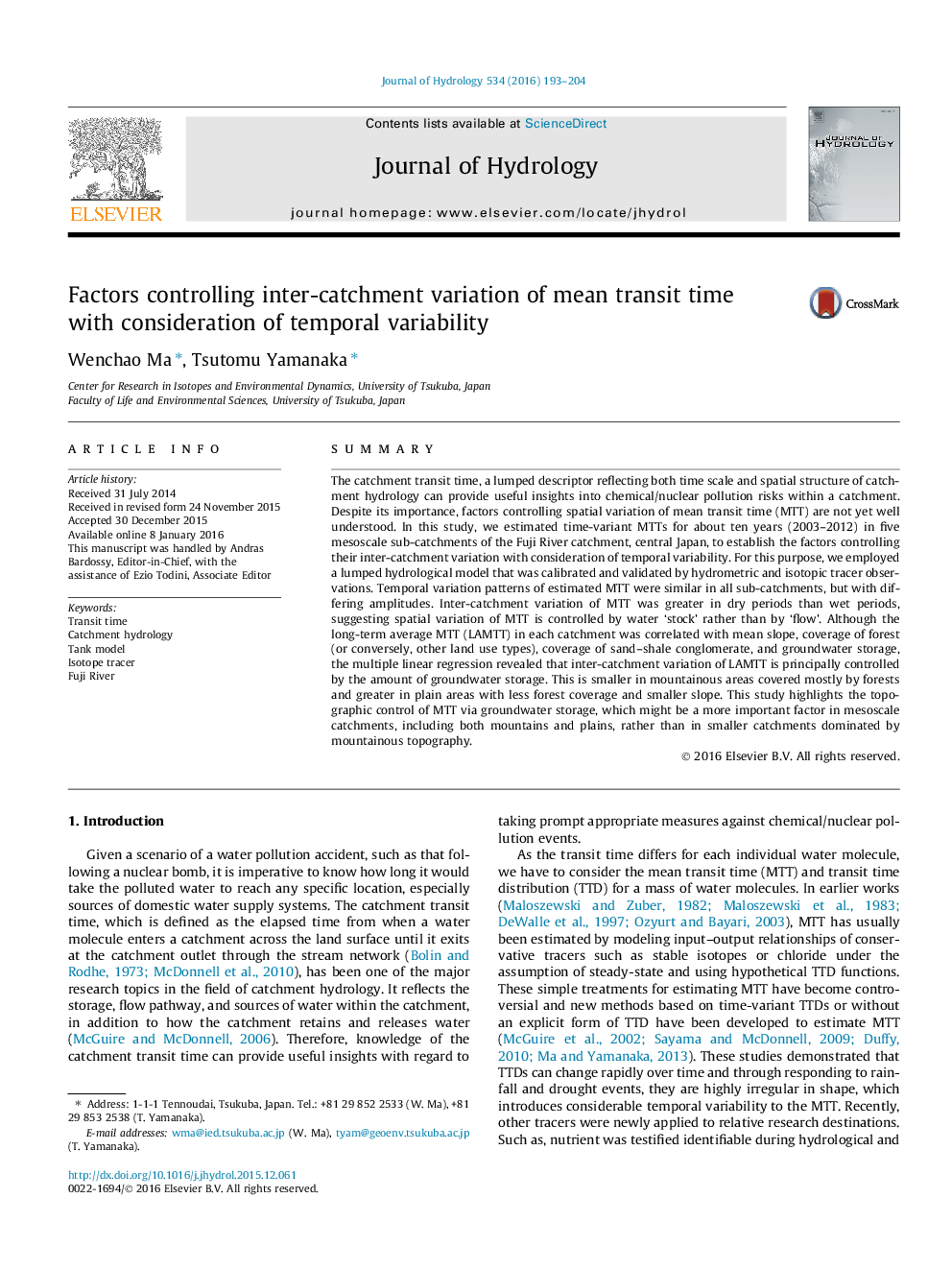| کد مقاله | کد نشریه | سال انتشار | مقاله انگلیسی | نسخه تمام متن |
|---|---|---|---|---|
| 6410317 | 1629918 | 2016 | 12 صفحه PDF | دانلود رایگان |
- Temporal variation patterns of MTT are similar in all sub-catchments.
- Inter-catchment variation of MTT is greater in dry periods.
- Spatial variation of MTT is principally controlled by groundwater storage.
SummaryThe catchment transit time, a lumped descriptor reflecting both time scale and spatial structure of catchment hydrology can provide useful insights into chemical/nuclear pollution risks within a catchment. Despite its importance, factors controlling spatial variation of mean transit time (MTT) are not yet well understood. In this study, we estimated time-variant MTTs for about ten years (2003-2012) in five mesoscale sub-catchments of the Fuji River catchment, central Japan, to establish the factors controlling their inter-catchment variation with consideration of temporal variability. For this purpose, we employed a lumped hydrological model that was calibrated and validated by hydrometric and isotopic tracer observations. Temporal variation patterns of estimated MTT were similar in all sub-catchments, but with differing amplitudes. Inter-catchment variation of MTT was greater in dry periods than wet periods, suggesting spatial variation of MTT is controlled by water 'stock' rather than by 'flow'. Although the long-term average MTT (LAMTT) in each catchment was correlated with mean slope, coverage of forest (or conversely, other land use types), coverage of sand-shale conglomerate, and groundwater storage, the multiple linear regression revealed that inter-catchment variation of LAMTT is principally controlled by the amount of groundwater storage. This is smaller in mountainous areas covered mostly by forests and greater in plain areas with less forest coverage and smaller slope. This study highlights the topographic control of MTT via groundwater storage, which might be a more important factor in mesoscale catchments, including both mountains and plains, rather than in smaller catchments dominated by mountainous topography.
Journal: Journal of Hydrology - Volume 534, March 2016, Pages 193-204
